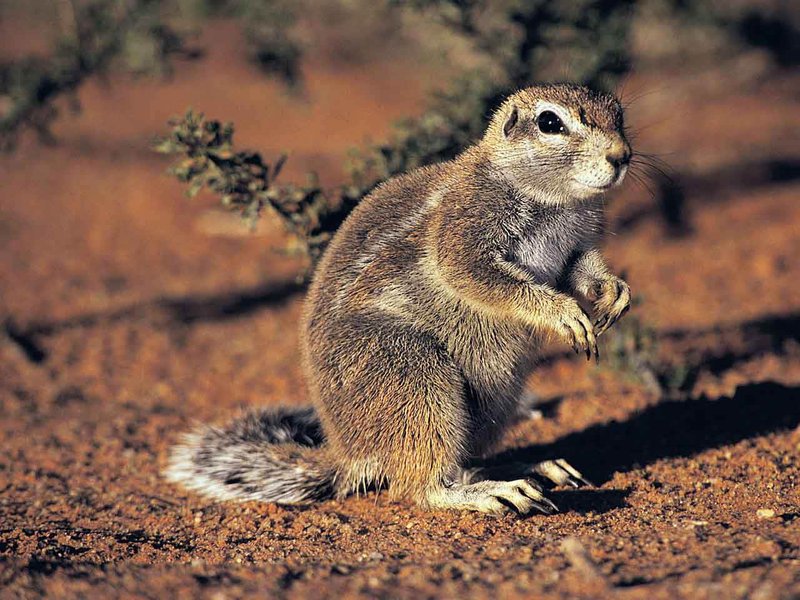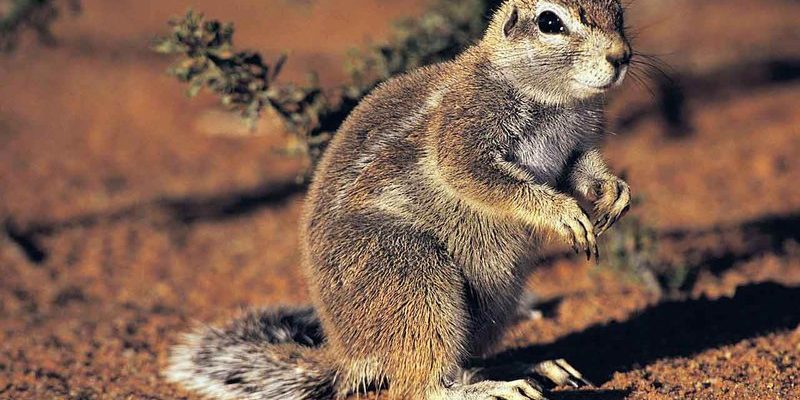
The xerus, a type of ground squirrel primarily found in Africa, is not only adorable but also essential for maintaining ecological balance. Just think of it as a middle child in the animal kingdom—overlooked but crucial. These rodents contribute to their ecosystem in various ways, from soil aeration to being a food source for predators. Let’s dive into their world and explore just how they fit into the larger picture.
Habitat of the Xerus
The xerus primarily inhabits the arid regions of Africa, particularly in grasslands and scrublands. These areas are characterized by their dry climate and sparse vegetation. Think of them as nature’s mini-survivors, adapting to live in harsh conditions. They dig intricate burrow systems to escape the heat and store food, which helps them thrive where many other animals might struggle.
Their burrows also serve another major purpose—they promote soil health. When these little critters dig, they aerate the soil, allowing water and nutrients to penetrate deeper. This is essential for plant growth, as it helps maintain the ecosystem’s balance. Without the xerus, the soil in their habitats could become compacted and less suitable for other plants and animals.
Food Sources and Foraging Behavior
Xeruses are primarily herbivores, munching on a diet mainly consisting of seeds, roots, and leaves. You might be wondering how they find food in such a dry environment. Well, they’re quite crafty! Their keen eyesight and acute sense of smell help them locate food hidden beneath the surface.
During foraging, they play a vital role in seed dispersal. As they eat and move around, they inadvertently spread seeds across their territory, which aids in plant reproduction and growth. This, in turn, creates a more diverse environment that benefits other species. It’s like they’re nature’s little gardeners, helping their ecosystem thrive one seed at a time.
The Xerus as a Prey and Predator
In the grand scheme of things, xerus are an important food source for a variety of predators, including birds of prey, snakes, and even larger mammals like foxes. This might sound grim, but it’s how nature balances itself out. By being part of the food chain, they help support the populations of these predators, who, in turn, keep the xerus population in check.
Without their role as prey, the predators would suffer from food shortages, which could lead to an imbalance in the ecosystem. So, while they might seem small and insignificant, they are crucial players in the wildlife drama unfolding every day.
Social Structures and Communication
Xeruses are social creatures, often living in groups called colonies. These groups provide safety in numbers, which is essential for avoiding predators. They communicate using a variety of vocalizations, including barks and chirps, to alert one another of danger. Imagine a group of friends at a picnic, always watching each other’s backs—that’s how they function!
Their social structure is fascinating as well. The xerus has a hierarchy within their groups, which helps them organize foraging and watch for threats. This communal behavior not only strengthens their survival chances but also contributes to their role in the ecosystem, as they work together to maintain a healthy and safe environment.
Impact on Soil and Plant Life
As mentioned earlier, xeruses play a significant role in soil aeration. Their digging not only benefits their own food supply but also enhances the overall health of the soil in their habitats. This is vital for plant life, which relies on nutrient-rich soil to flourish.
Additionally, the xerus helps in the cycle of nutrient replenishment. When they eat plants, their waste becomes fertilizer that enriches the soil. This natural process allows plant life to thrive, which in turn supports a diverse range of other organisms, like insects and birds. It’s a beautiful cycle of give and take, all thanks to these humble little rodents.
Conservation and Threats to the Xerus
Despite their importance, xeruses face threats from habitat destruction and climate change. As humans expand into their territories, they lose critical areas for foraging and breeding. It’s like taking a corner piece out of a puzzle—it can alter the entire picture.
Conservation efforts are essential to ensure that these little creatures can continue to play their role in their ecosystems. By protecting their habitats and raising awareness about their ecological importance, we can help maintain the balance in their environment.
In conclusion, the xerus might be small, but its role in the ecosystem is anything but insignificant. From aerating the soil and dispersing seeds to serving as a food source for predators, these little mammals contribute to a balanced and thriving ecosystem. Next time you think about the circle of life, remember the xerus and the vital part it plays in the natural world. All of these connections underscore how every creature, no matter how small, has its place in the grand tapestry of life.

